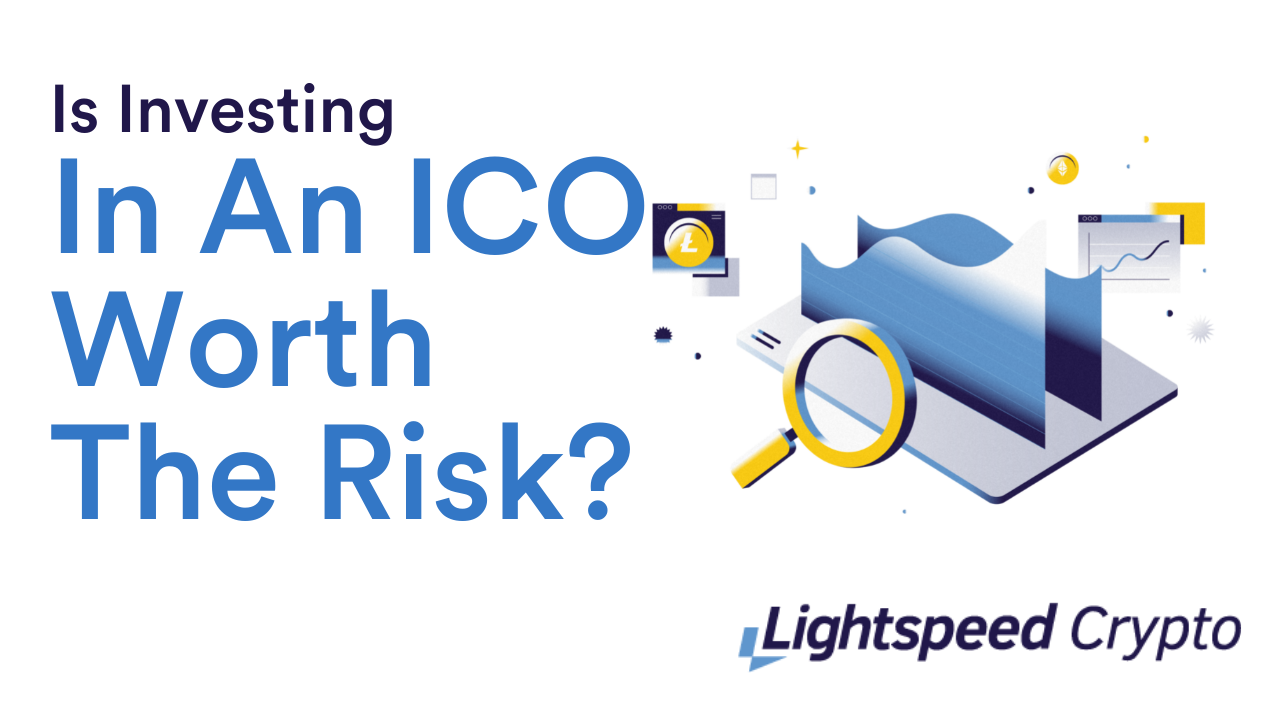Is Investing In An ICO Worth The Risk?
An Initial Coin Offering (ICO), also referred to as an Initial Currency Offering, is a particular type of crowdfunding for the exact purpose of cryptocurrency blockchain projects. ICOs are typically perceived to be mitigating risks for modern investors.

An Initial Coin Offering (ICO), also referred to as an Initial Currency Offering, is a particular type of crowdfunding for the exact purpose of cryptocurrency blockchain projects. ICOs are typically perceived to be mitigating risks for modern investors.
ICO is synonymous with the traditional Initial Public Offering (IPO), allowing investors to acquire shares of a publicly listed company; however, coins issued in an ICO can also be advantageous for a software service or product.
The significant disparity between an ICO and an initial public stock offering is that investing in an ICO does not secure you an ownership share in the cryptocurrency project or company.
Companies seeking to generate income to create a new coin or service can launch an ICO as a way to source funds. These companies can raise these funds for their projects by giving investors tokens or cryptocurrencies in exchange for fiat money or leading digital assets such as Bitcoin (BTC) and Ethereum (ETH).
How Do ICOs Work?
The fundamental goal of ICOs is to influence the decentralized systems of blockchain technology in capital-raising actions that will align the interests of several stakeholders. The primary objective of ICOs is to remove intermediaries from the capital-raising system and create direct relations between the company and investors. Additionally, the interests of both parties are aligned. There are several steps involved in the working process of an ICO, and they are listed below:
1. Structuralization of the ICO: When a company wants to raise money through an ICO, the organizers' first step is to determine how they will structure it. This can be done in many ways depending on the demand dynamics and the token price to be created. Apart from structuring the ICO, a crypto project usually begins with a white paper. A white paper is an informational document issued by a company or project that serves as a comprehensive guide to promoting the projector's features, as in this case, the ICO.
2. Recognition of Investment Goals: The driving force of every ICO is the company’s intention to raise capital. The company points out the plans for its fundraising campaign and establishes pertinent materials about the company or project for likely investors.
3. Creation of Tokens: Basically, tokens represent an asset or utility on a blockchain. Creating tokens is essentially the next step involved in the working process. These tokens are adaptations of existing cryptocurrencies that are substitutable and exchangeable. Creating tokens is relatively easy as it mainly relies on existing cryptocurrencies, such as Ethereum, with slight code modifications.
4. Preparatory Offering: After the tokens have been created, they are offered to the investors. The company can then use the revenue from the ICO to introduce a new coin or service. At the same time, the investors can await using the attained tokens to profit from this coin or service or wait for the token's value to appreciate.
Examples of Initial Coin Offerings
There are numerous examples of Initial Coin Offerings. One of them is Ark. Ark, a digital currency platform that allows for the timely integration of other cryptocurrencies into its blockchain. Its initial token price was $0.04 during its ICO, but today sits at a coin market cap price of $1.11.
Another example is NEO. From a primary token value of 3 cents to an elevated price of approximately $180, NEO investors who believed in the course of the project at that time made an unbelievable amount of profit.
A more common example is Ethereum. Ethereum’s ICO, regarded as one of the most successful ICOs in history, is the second-largest digital currency by market cap today. Its ICO in 2014 generated $18 million in 42 days. The project developers retailed 60 million Ether and raised around 31,000 Bitcoins (BTC), estimated at approximately $13 million in the same year.
Ether tokens were initially valued at $0.31 each; those tokens presently sit at over $3,300 as of January 12, 2022, giving an unbelievable return on investment (ROI) for the investors who bought in during the ICO.
Despite being an entirely new phenomenon in finance and technology, the introduction of ICOs has significantly affected capital-raising techniques in recent years.
However, Initial Coin Offerings are, for the most part, unregulated; therefore, investors must tread with extreme caution when researching and investing in ICOs. This is because while some ICOs have generated enormous returns for investors, many others turned out to be defrauding and useless, leading to painful losses.
In summary, investors aiming to participate in ICOs should orient themselves to the crypto industry and become well-informed about any ICO before taking part in any ICO.